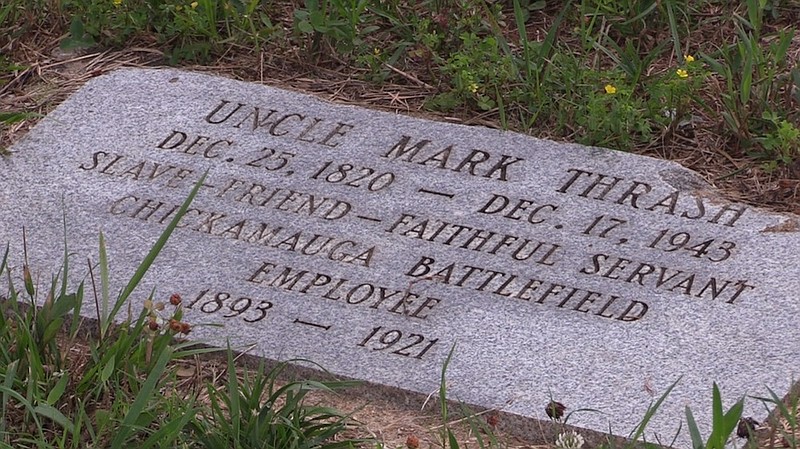It's not often these days that we get to read some really uplifting news - especially uplifting news about Black history. But Monday, a Chattanooga Times Free Press article headlined "Restoration at District Hill Cemetery close to being complete," marked a red-letter day.
And it took a lot of doing to bring the more-than-a-century-old cemetery in Chickamauga, Georgia, back to the map, to research its deep history and hopefully ready to open fully within 12 to 18 months, according to Joyce Haslerig-Harrison, a fourth-generation landowner of the property where in the early 1900s, it was designated a "colored" cemetery by longtime Congressman Gordon Lee's family.
"There's a history here, and no one knows that history," Harrison said. "There are so many African Americans that have contributed to this country, and if we don't tell everyone the significance or the value of the people that lived it, who would do it if we don't? It's almost a ministry of service that you're doing for your community and your country to tell those stories."
For instance, among those buried there is "Uncle" Mark Thrash, a once-enslaved groundskeeper for the Chickamauga Battlefield through the late 1800s and early 1900s. Thrash is known to have buried Union and Confederate soldiers and would tell visitors to the battlefield stories of life before the Civil War. He lived in a two-room cabin on park grounds for years, and he died there just eight days before his 123rd birthday.
According to the National Park Service, Thrash "would enthrall visitors for hours. ... In the end, it is somewhat irrelevant how many of his stories are true. Thrash's carefully crafted public image of "Uncle Mark" was a means by which he could not only survive, but thrive in an era in which African Americans were considered second class citizens. And in doing so, he promoted the preservation of this park, and inspired people to care about this place. Even now, decades after his death in 1943, visitors will often share with park staff stories of meeting Mark Thrash when they were younger, and how he inspired them to learn about the battle."
The District Hill cemetery was used through the 1940s, but over time, maintenance on the grounds stopped. Because of that, the nearly 130 African Americans buried there following the cemetery's public dedication in 1912 had their headstones and plots temporarily lost to history. And even before the cemetery's official dedication, hundreds of enslaved people were buried there in unmarked graves, according to the legal documents from the era.
Thanks to a renovation and research project that began decades ago by Harrison's father, the late Willie Haslerig, that is changing. Haslerig cleared the space of trees and collected the names of every person buried there that he could find through church archives and local families. Harrison has picked up his work.
In 2017, graduate students from the University of Georgia's College of Environment and Design developed a plan to preserve and maintain the cemetery. Their findings and final project were awarded a top prize by the American Society of Landscape Architects Fund.
And in 2016, Dr. Alicia Jackson - a professor at Covenant College - started an African American History course and had her students research and write biographies on the people buried at District Hill. With each class, she helps Harrison uncover more information on the 130 or so known people buried there while giving students a firsthand look at history.
"It's a really powerful experience for the students to learn about African American history and local history," Jackson said. "The vast majority of the students who take my class are not of color and many of them are not from the South, so it's always a really eye-opening experience for them."
More than that she said, it helps put flesh on the bones of Chickamauga's history, as many of those buried there helped build the town, Walker County and the nation's first military park.
"You have people who are washer women, who are buried there. People who worked at a dairy in the community, who are buried there. So, it's not as if these folks just have an importance to the Black community. But, they tell a richer story about the Black presence, the African-American presence in North Georgia," Jackson recently told WDEF TV.
But they also tell a richer story about all our history.
Harrison summed it up perfectly.
"It's not an African-American story. It's an American story," she said.
It is. And we're proud of this important work by Harrison, Jackson, the Covenant students and the UGA students. Thank you.
